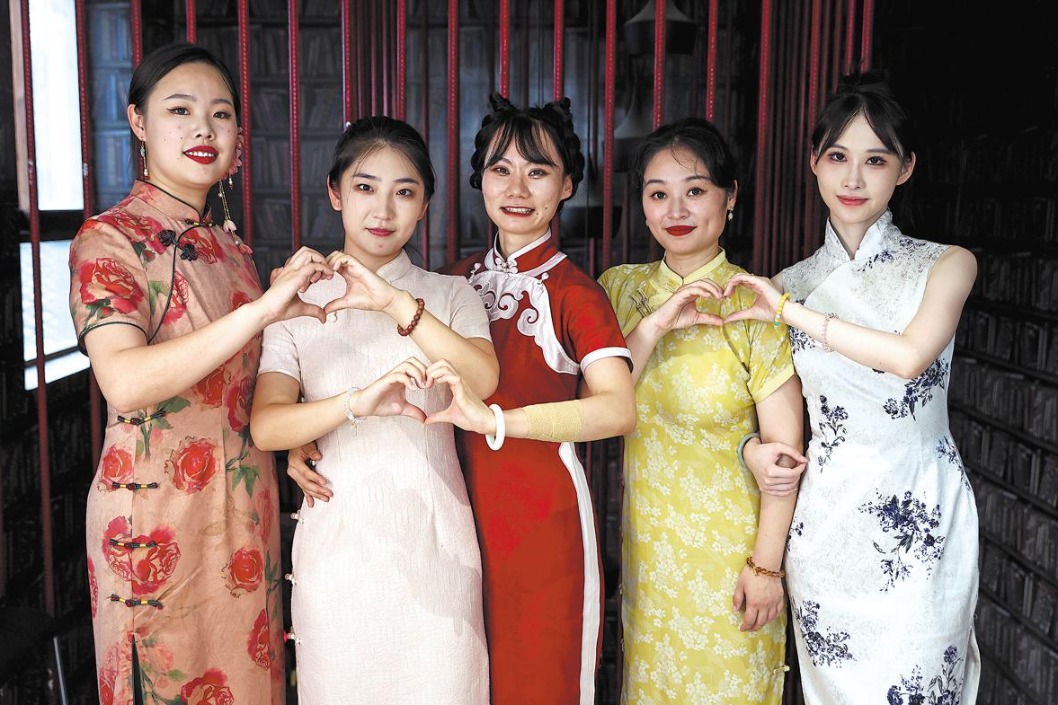Aviation event showcases world of futuristic low-altitude economy

A futuristic "flying taxi" turned heads this week at China's top civil aviation innovation event, offering a vivid glimpse into the country's ambitions to lead the global race in low-altitude flight and urban air mobility.
The third Exhibition of Technology and Education in Civil Aviation, a three-day event that concluded on Wednesday in Beijing, featured several full-scale electric vertical takeoff and landing aircraft — or eVTOLs — developed by leading Chinese manufacturers. The showcase highlighted China's push to assert technological leadership in the skies.
For many visitors, the sleek, drone-like vehicles on display offered a tantalizing preview of a not-so-distant future of urban flight.
Compact aircraft inspired by drone design and intended for short-range, electric-powered flights, eVTOLS are being hailed as breakthroughs in green, efficient transportation. Featured models included EHang's EH216-S — the first pilotless human-carrying aircraft in China to receive air operator certificates from the Civil Aviation Administration of China — AutoFlight's Prosperity series, Vertaxi's M1, Aerofugia's AE200 and Govy's Aircar.
EHang's EH216-S is already undergoing trial flights in Hefei, Anhui province, and Guangzhou, Guangdong province.
"The aircraft can ascend up to 120 meters, giving passengers a unique aerial perspective," said Lu Rucheng, the company's chief engineer.
"China has built a solid industrial supply chain and technological foundation to support the development of the low-altitude sector," Lu said. "Many people have dreamed of flying cars and have watched countless sci-fi movies. These visions reflect human aspirations and have helped drive innovation."
AutoFlight demonstrated the capabilities of eVTOLs with a 52-kilometer cross-sea flight between Shenzhen and Zhuhai in Guangdong province, completing the trip in just 20 minutes — an 85 percent time savings compared with driving.
Currently, eVTOLs fall into two broad categories: cargo drones used in logistics and emergency services, and passenger vehicles designed for sightseeing, urban travel and airport shuttles.
Industry insiders say China's supportive policies, vast market potential and expanding domestic supply chains present enormous opportunities, though challenges remain.
"China's national policies provide strong support, and with capital investment increasing and airspace regulations gradually being relaxed, the low-altitude economy is poised for significant growth," said Yue Tingting, vice-president of Vertaxi, a Shanghai-based electric air taxi developer.
"We believe China has the potential to become one of the largest and most dynamic markets in this sector globally," she said. "Industry players like us are optimistic, but large-scale adoption will ultimately hinge on a range of factors, including airspace management, infrastructure development, laws and regulations, scheduling systems, OEMs and the broader industry supply chain."
The value of the low-altitude economy — which includes activities below 1,000 meters such as drone logistics, low-altitude tourism and aircraft manufacturingis forecast by the CAAC to reach 3.5 trillion yuan ($480 billion) by 2035.
Airworthiness authorities are also moving to support the emerging industry.
"With the rapid development of low-altitude aircraft such as drones and eVTOLs, our certification processes must evolve to address new safety challenges and technological innovations," said Hou Xiaoyu, deputy director of the system certification department at the CAAC Airworthiness Certification Center.
"Flying taxis could be widely available to the public within five years," said Wang Huailin, an engineer at Aerofugia, another key player in the sector. He estimated the cost of flying could be two to three times that of current luxury ride-hailing car services.
Today's Top News
- China to open its door to foreign investment wider
- China criticizes Canadian tariffs on products containing Chinese steel
- US legislative chaos undermines its democracy
- Why China is irreplaceable in supply chain
- China's FDI inflow tops $700b since 2021
- Australia, China set to bolster steel partnership






























